17 Jun Lace Making- A Cultural Craft of Europe
Lace Making: My fascination for handmade laces started three years back in the summers of 2018 when I searched for artisan groups in India to help us recreate old collected laces and trims from Europe. Until then, my knowledge of high-quality handmade laces possible to accomplish in India was limited only to cotton crochet work. However, to my surprise, we found groups of women based in small villages across different states of Southern India, practicing a variety of high-skilled European lace making techniques.
These European lace making techniques that are practiced in India are an inextricable part of the history of the confluence of European missionary visitors with the people of Indian villages. The women artisans have only good things to talk about those times. Those were prosperous times, as they tell. The newly established European missionaries would train the Indian village women with unique lace making skills. The women would make a variety of products, mainly to be sold to the European churches.
Over generations, these skills have become a part of the artisan family or village tradition. Thus, in their humble way, the Indian women have preserved these European crafts.
However, with time the European missionaries became less and less influential. The markets they provided do not exist anymore partly since the laces are now easily made on machines, and also since, these handmade laces made with slow specialized skills are highly-priced.
Nevertheless, we are very excited to ‘discover’ this new language of textile making in the hinterlands of India. For example, Indian women are skilled in intricate Carrickmacross lace making technique, which has its origin tied to Ireland, or in detailed bobbin lace technique, which practically once had its connoisseurs and practitioners almost all over Europe.
Below are the images of our work with Lace Makers in the villages of South India.



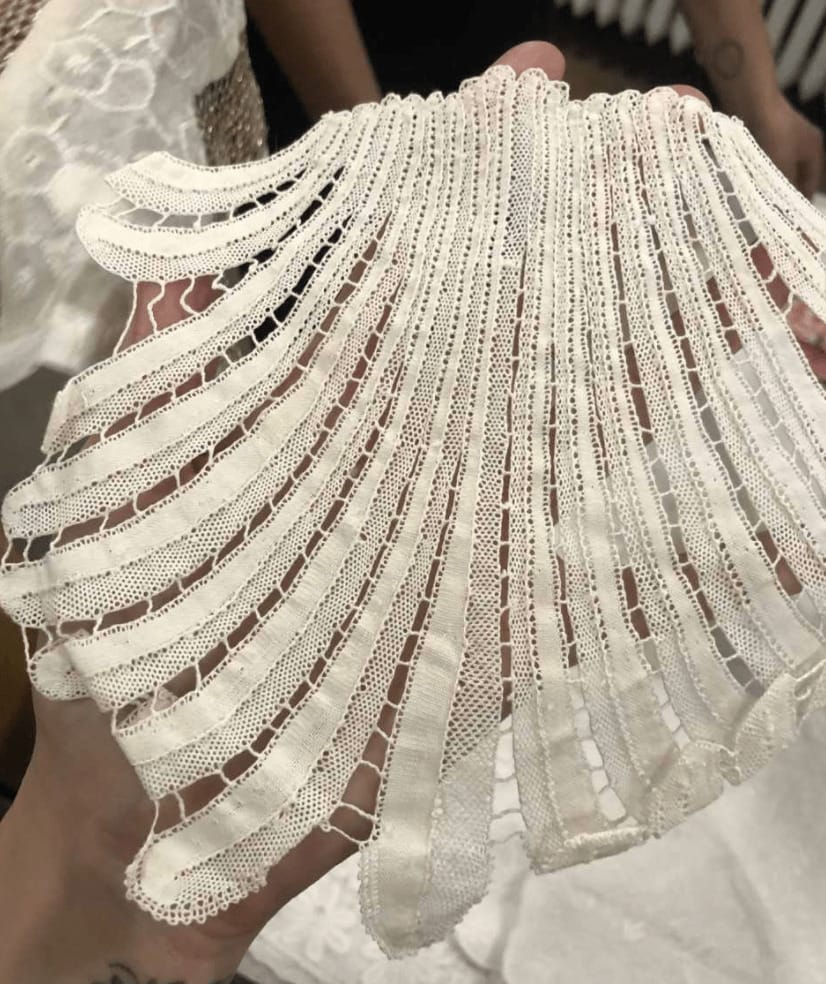


History of Lace Making in Europe
Lacemaking is an excellent craft tradition from Europe. Women all over Europe practiced lace making as a hobby before it became a very competitive industry-leading to incredible innovations. I am not an expert on this subject as it is a vast and detailed subject. However, in this article, I would love to share some basic information that I could research on handmade Laces.
There is no confirmed date or place of origin of laces since lace or the lacy look evolved from other techniques, mainly from embroidery techniques like loops, picots, cutwork, applique, etc. However, the city whose name was first associated with lace is Venice. The first known lace pattern books (Le Pompe in the 1550s) were printed in Venice, thus making laces mainstream.

By 1600 high-quality lace was being made in many centers across Europe, including Flanders, Belgium, Spain, France, and England — women who were trained at other textile crafts picked up the new skills with relative ease. The lacemaking at that time involved two distinctive techniques—needle lace and bobbin lace—that began simultaneously. Needle lace is made with a single needle and thread, while bobbin lace entails the plaiting of many yarns wound around several bobbins. The distinctive feature of the laces was
A) Their place of origin. As makers in each region had their unique style and design.
B) Their quality of threads. It ranged from sumptuous silk or linen threads to expensive pure gold and silver threads showcasing the wealth and taste of the owner.


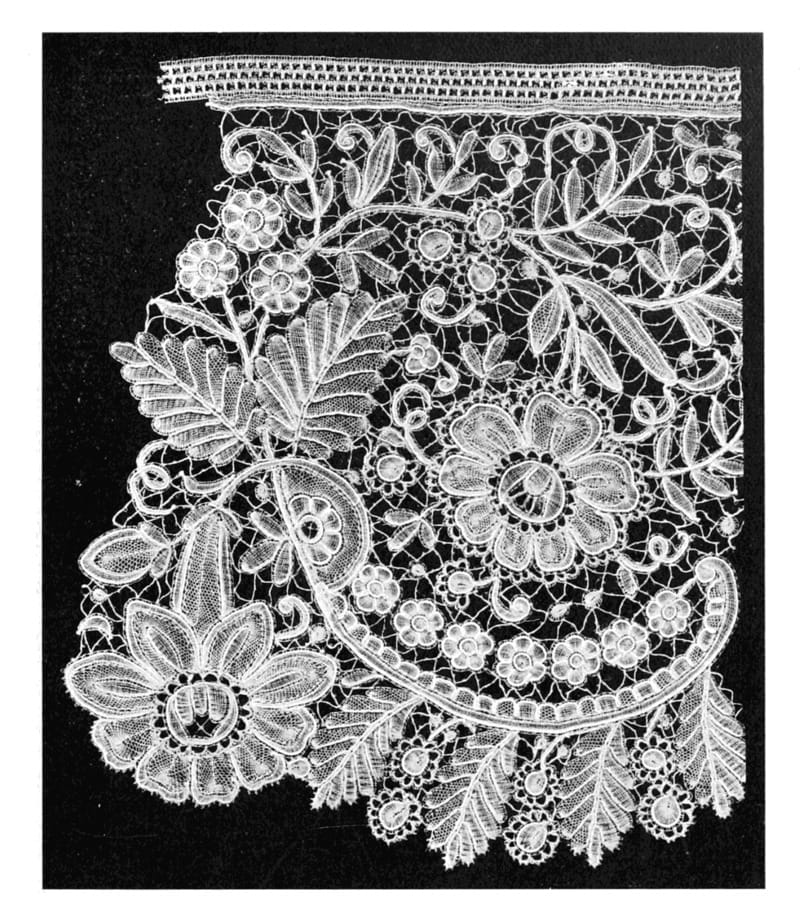


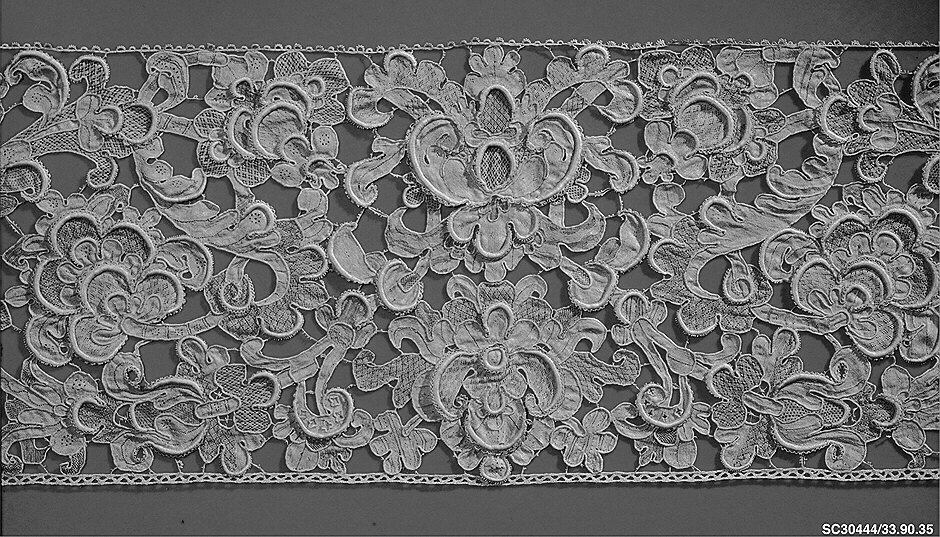
Fashion’s role in the Spread of Lacemaking in Europe
As a completely handmade specialty item, laces were always the objects of luxury and great desire. An unabated desire for lace continued from both men and women in Europe from its inception to the eighteenth century. Any intercultural movements within the European subcontinent, like marriages or migrations, led to the cross-cultural evolution of lace design, technique, and fashion— As a result, lace styles evolved throughout the centuries— Laces were the most exclusive part of the outfit. They reflected the sophisticated tastes of the aristocracy adorning women and men alike. Laces also found their way to decorate furnishings.
However, by the end of the eighteenth century, the uprising of the French revolution, which suppressed many luxury industries, followed by the industrial revolution, at the start of the nineteenth century, which led to technologies that could recreate even the most tedious part of handmade lace on a machine. The demise of handmade laces started.
A lot of efforts to continue handmade lace have remained since. There are many guilds, museums, and researchers dedicated to preserving these crafts. Additionally, domestic techniques such as tatting and crochet have been encouraged all over Europe. Many of these techniques have also aided in relief efforts in the past, notably the Irish crochet lace cottage industry following the potato famine in Ireland.
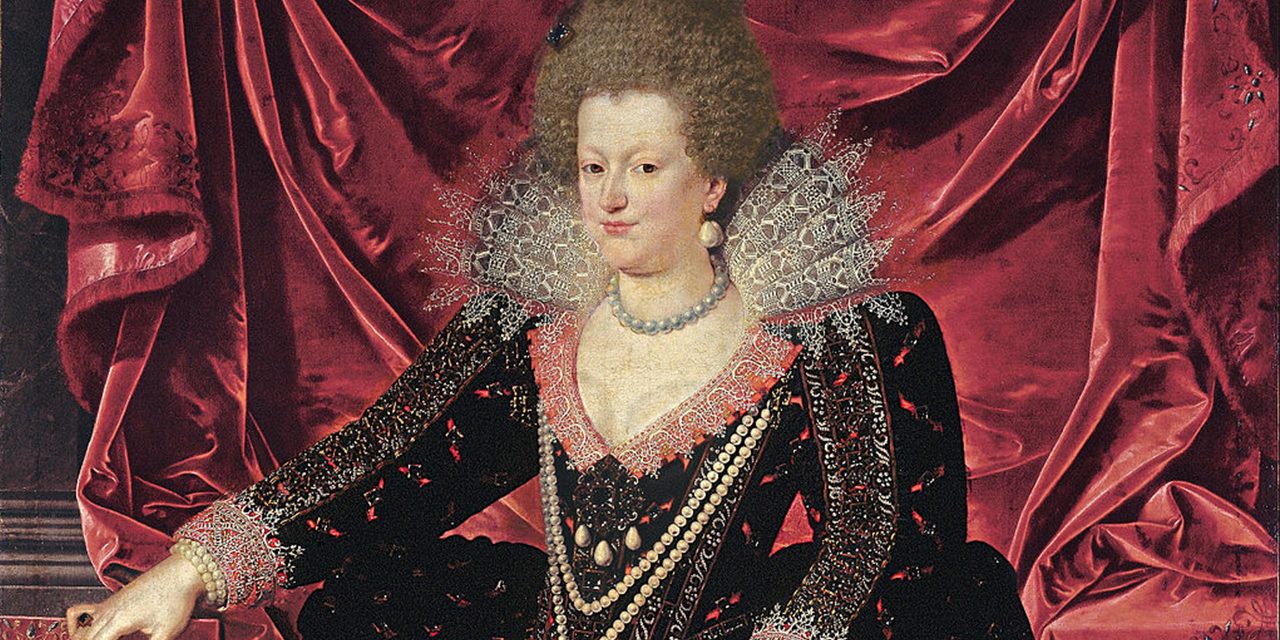
But overall, it is a dying craft in Europe with some recent interests from high-end fashion brands like Dior, who forayed into the villages of Italy to work with the authentic Tombolo lace embroidery artisans for the Cruise 2021 show. Thanks to the power of social media the Tombolo lace embroidery artisan –Marco Fersino Ribeiro Amorim from Italy, who materialized this collection for Dior, connected with us after this article was published. And we are so happy to link his profile HERE
kate Middelton’s wedding dress by British designer Sara Burton’s for Alexander McQueen was hand-stitched using the Irish Carrickmacross lace-making technique, which originated in County Monaghan in the 1820s.
The question is, how long can a craft tradition survive without regular innovation and demand?
Read More
WHITE ON WHITE EMBROIDERY OF INDIA- CHIKANKARI EMBROIDERY
More Craft techniques HERE
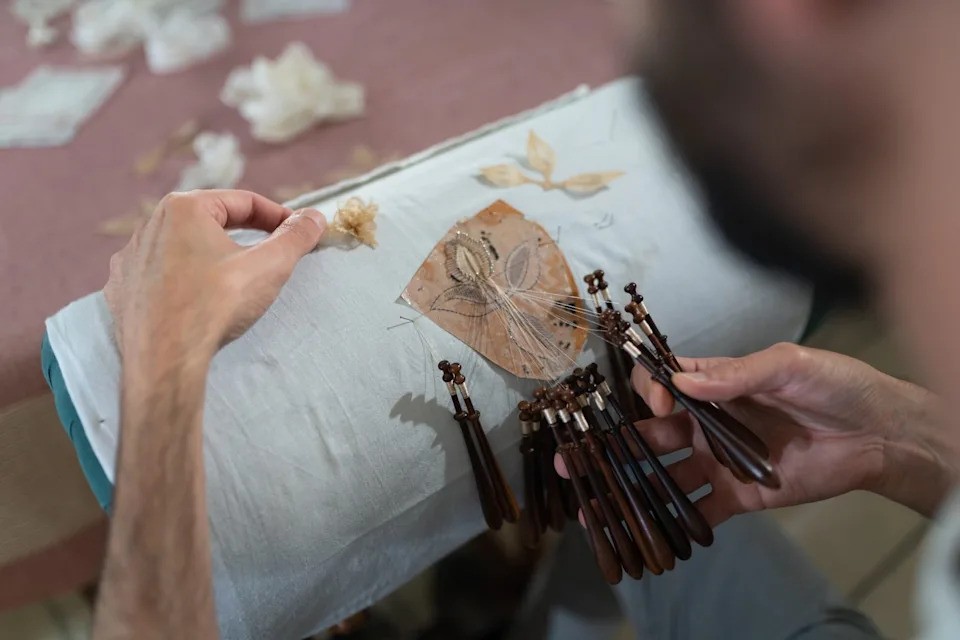



ABOUT THE AUTHOR
 Nidhi Garg Allen is an alumnus of Parsons School of Design and Adjunct Professor at the Fashion Institute of Technology. She is a technologist turned artisan entrepreneur and the founder and CEO of Marasim. Marasim based in NYC is committed to preserving artisanal textiles that make use of regional techniques without uprooting craftspeople from their native communities
Nidhi Garg Allen is an alumnus of Parsons School of Design and Adjunct Professor at the Fashion Institute of Technology. She is a technologist turned artisan entrepreneur and the founder and CEO of Marasim. Marasim based in NYC is committed to preserving artisanal textiles that make use of regional techniques without uprooting craftspeople from their native communities


Bharathi Ghanshyam
Posted at 22:26h, 29 JuneAre these laces available for sale?